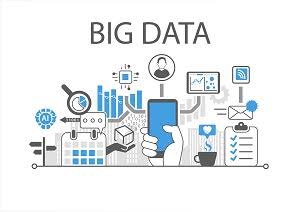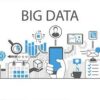For even more than a decade, the Internet of Things has been nothing further than a nerdy conception. With the digital age in high gear, nonetheless, that notion seems to be eventually gaining movement. Dynamic players in the computer, machine, and indeed real estate sectors are steadily coming to terms with the immense eventuality of IoT and big data in the app industry. In this article, we are going to discuss how IoT and big data are revolutionizing the app industry.
Introduction
Going solely by this environment, it isn’t surprising that the adding fashionability of IoT is having a ripple effect on the app sector. Subsequently, IoT and big data are revolutionizing the app industry. Although developers of all stripes have tapped into the technology, many are making as important use of the Internet of Things as today’s app inventors. By exploiting the ubiquity of IoT, along with the power of Big Data, app makers are uncovering a new, auspicious way of finding clients.
As technology advances, IoT and big data in the app industry are set to become the new phase of development, where operations will connect multitudinous biases, detectors, and cloud services to serve unique, thrilling purposes. This composition explores how the Internet of Things is impacting the app assiduity, where Big Data fits by, and what lies ahead.
IoT and Big Data in the App Industry
The idea of incorporating artificial intelligence into electronic bias kicked into full gear several times ago, with the implementation of RFID markers. Low-power chips that enable wireless communication across gadgets. Nowadays, however, IoT has expanded to include a myriad of internet-enabled biases, all of which can collect and partake data amongst themselves.
Because of cheaper and more robust computing tackle, better apps, and dependable wireless networks, it’s now possible to make anything, from a coffee maker to an airplane, an IoT device.
Defining the Internet of Things
Anyone hearing the expression “the Internet of Things” for the first time will probably find it silly and void of meaning. Behind this buzzword, still, is one of the most important technological revolutions ever. Through IoT, the internet is changing from a connection of computers to a mega-network that links everything around you. With that in mind, the Internet of Things can be defined as an extension of computing and networking capabilities to bias that aren’t regarded as computers, enabling them to interact with each other with little to no human input.
Thus, rather than emphasizing the direct use of computers by humans, IoT and big data in the app industry give devices without defenses the capability to connect to the internet and access live data by themselves. Still, think about it this way every “dumb” device you have in your home needs a certain degree of help from you to work, if you are wondering what it means to have IoT bias in your life.
Your living room lights bear you to put them on, your AC needs to be manually set, and your television demands that you use the ever-elusive remote to control it.
IoT and big data in the app industry are all about removing as much friction as possible, so you can make your life easier without indeed trying. With smart bias, you can set up your watering system to avoid watering the field after it rains, or your garage to open when you are pulling up to the driveway. Your heating system could also work with the stir detectors in the house and the temperature detectors outside to give a perfect balance.
The Internet of Things brings all these exciting possibilities and much further to the table. And, it’s not just small startups with lofty dreams of changing the world that are driving the IoT revolution. Big names like Philips, Nokia, and Fitbit are getting involved as well. Phillips Hue, for case, promises to give you further control of the lighting in your home, so you can sit back while your light eventually ramps up the brightness as the sun sets, among other possible gimmicks.
Where Does Big Data Come in?
Big Data analytics has had a meaningful role to play in the development of the IoT revolution. Because the conversion of objects into smart bias enables them to acquire and manage data from the internet, their chips and apps are designed substantially to collect data that specifies product performance and consumer operation patterns.
Handling, storing, and exercising data from new IoT biases need a broad range of tackle and software structure, and there are no more tools for the job than Big Data analytics. So, simply put, IoT can give “big data” from which Big Data analytics can gather information and induce the perceptivity needed to make the IoT device more. With Big Data tools, IoT associations are suitable to dissect the evolving data sets and thus acclimatize to changing consumer trends.
IoT, Big Data, And The App Movement
The Internet of Things and Big Data assure the premise of a new wave of app development IoT apps. These two inventions enable the combination of detectors, bias, networks, and cloud technologies to yield several new approaches for app development.
Presently, most computer operations are used as endpoints to their human users for purposes like streaming music, locating businesses, playing games, and social media. By using the power of IoT and Big Data, apps can come gateways as well as endpoints, so that, in addition to easing human device commerce, they can also enable device-device connectivity.
Apps, particularly mobile operations, can also serve as detectors, as users can use native OS functionality to collect data from a vast array of biases in the IoT network. Manufacturers of home appliances can employ specific apps to identify user patterns and preferences and ameliorate their products consequently.
Also, data regarding your position can be communicated from your phone or smartwatch to an IoT device like your heater, which can turn on automatically when you are on your way home.
The Internet of Things presents multitudinous openings for app inventors. While IoT offers new ways for bias to connect and communicate, these connections can only be useful to their human users through apps. The use of apps to bridge new smart objects to mainstream bias like smartphones and smartwatches is maybe the most important aspect of IoT.
What’s the Future of IoT and Big Data in the App Industry?
IoT is still in its early stages and developers are in the process of conforming to it. Thus, the path towards the mainstream relinquishment of IoT operations is still somewhat undetermined.
Anyhow, some trends are sure to take hold in the coming times. For starters, while the current process of developing an app starts by defining the app’s purpose, inventors will need to understand the technology of the “thing” itself so they can make operations that seamlessly connect it to the digital world.
With this understanding, it’ll also be possible for them to come up with apps that link numerous biases in one unified IoT platform. Similar multi-faceted operations will let users interact with an entire gamut of bias simultaneously.
New modes of connectivity are also likely to surface to enhance IoT connectivity. Although cellular services, Wi-Fi, and Bluetooth have been working well with current bias, IoT will bear robust networks to connect high-tech detectors and multi-platform electronics. App inventors will, thus, need to look for innovative ways to pair bias. More importantly, there will be indeed more collaboration between manufacturers of smart bias and app inventors to come up with complete IoT products.
Artificial intelligence will power a majority of IoT gadgets for automated learning, which means the operations will probably come pre-installed on the bias, rather than call upon the end user to install them.
Conclusion
IoT and Big Data in the app industry have begun already to transform the face of app development, thanks primarily to mobile technology. Within the coming many times, you can anticipate the creation of thousands of jobs in this space. As inventors continue to consider the best suitable way to take advantage of IoT and Big Data, it will not be long before the app assiduity completely embraces the two inventions. Get in touch with us now!
Manoj Kumar is a Digital Marketing Analyst at AeoLogic Technologies. I have 5+ years of experience in digital marketing - SEO, SEM, SMO, ASO and ORM.
























































































































































































